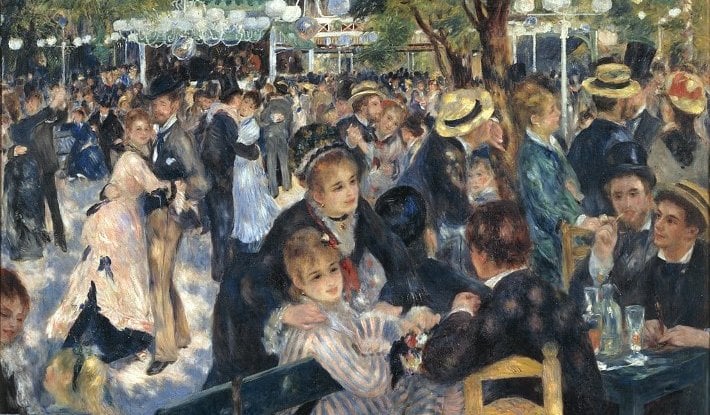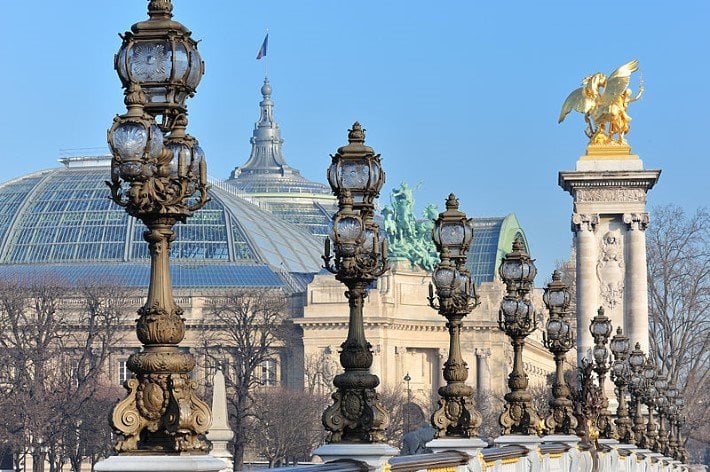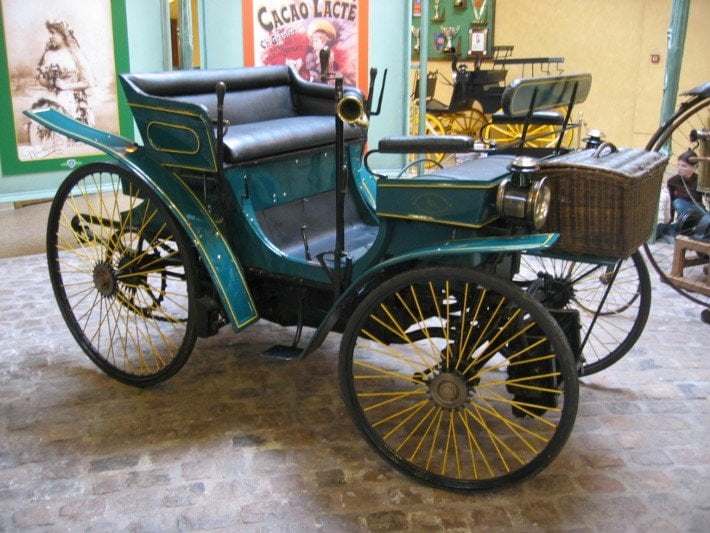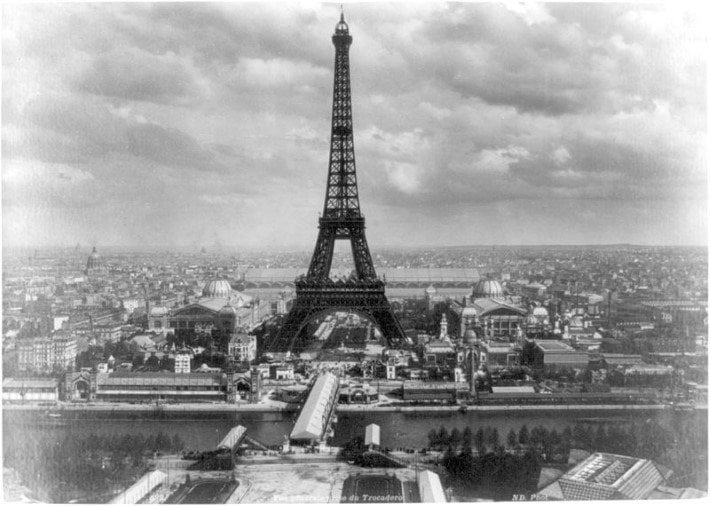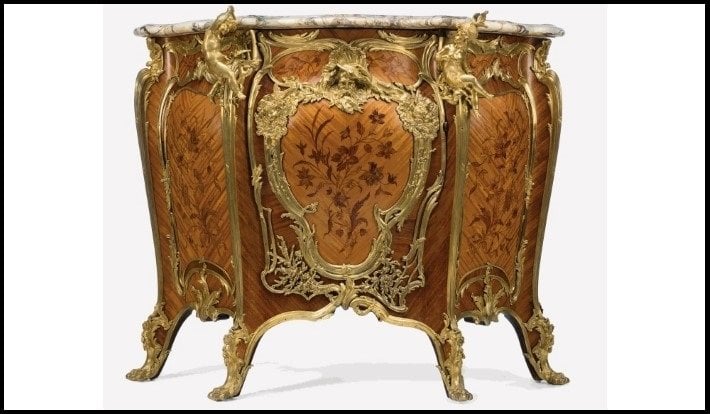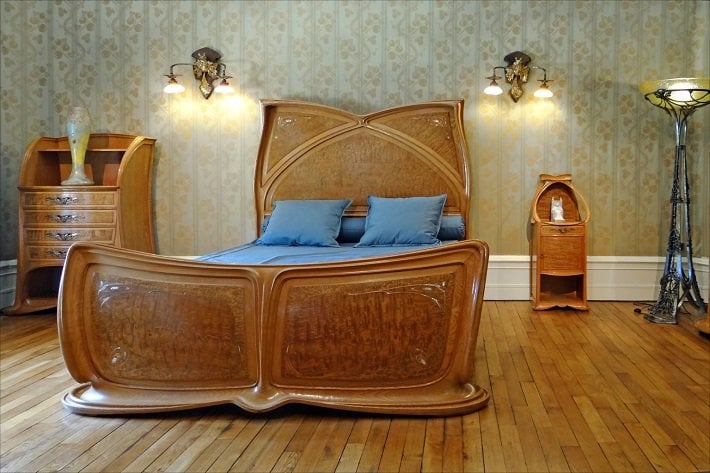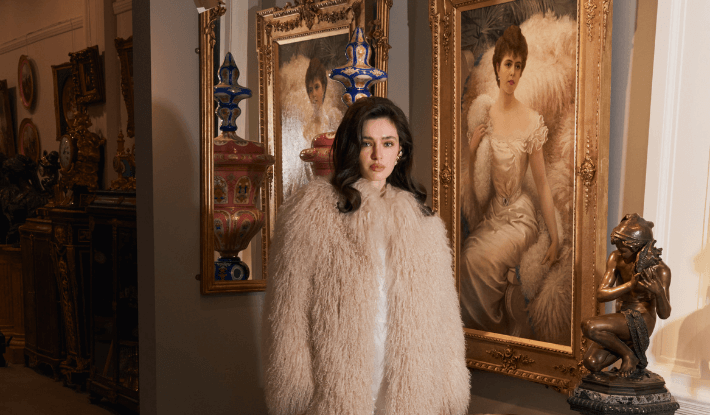What was the Belle Epoque?
La Belle Époque, or the Belle Epoque, was a period in French history that is synonymous with peace, prosperity, economic growth and optimism.
The Belle Epoque saw huge cultural advances, artistic freedom, social affluence and significant scientific and technological progress.
The movement extended across Europe, western Russia and even America, but ultimately it centred around Paris. The Belle Epoque arguably began in 1871 at the end of the Franco-Prussian war, but it truly gained momentum in the 1880’s and lasted up until the outbreak of World War I in 1914.
The outlook of the Belle Epoque was two-fold. It was progressive and embraced social change, new technologies and artistic freedoms; yet at the same time, it was nostalgic of beauties of the past.
In a time of peace and prosperity, France looked both forwards and backwards, celebrating the wonders of its history and looking optimistically to the future.
Where does the term 'Belle Epoque' come from?
The term Belle Epoque means ‘beautiful era’ in French. It was coined retrospectively in comparion to the horrors of World War I, against which the Belle Epoque was remebered as a ‘Golden Age’.
The Belle Epoque was a time of joie de vivre – ‘joy of living’ – and prosperity, especially when contrasted against the turbulence and hardships that befell Europe in the 20th Century.
What were the circumstances that led to the Belle Epoque?
The Belle Epoque was made possible by the circumstantial period of political stability and peace that was established in France and across Europe between 1871 and 1914.
Society began to enjoy the social and economic freedoms that had been long awaited throughout the turbulent 19th Century.
Democracy was flourishing in France for the first time in history, and the freedoms it promised extended across the entire population in a monumental wave of optimism.
Meanwhile, the second Industrial Revolution that took place during the 1870’s triggered important technological and scientific developments, new freedoms and economic prosperity.
Under these circumstances, the Belle Epoque - which was an age of consumerism, personal ownership and promise - blossomed and thrived quite organically, touching every area of society. Notably, the middle class, the bourgeoisie, grew exponentially and thrived as a class of consumers for the very first time.
The Boulevard Montmartre, 1897, by Camille Pissarro. This painting shows the bustling, busy Parisian street, with new automobiles, social groups and shops and cafés along the road. It symbolises the free, bourgeois expansion into public spaces where everyone could appear equal. © Wikimedia Commons.
How did science and technology influence life during the Belle Epoque period?
The second Industrial Revolution, which began in about 1870, saw the establishment and widespread implementation of a machine tool industry, and there were certain ground-breaking scientific and technological advances made during the Belle Epoque that expanded the limits of human possibility.
This was an exciting age of optimism, hope and futuristic dreams that captured not only France, but all of the Western world.
Wrought iron street lamps along the Pont Alexandre III, 1900, a symbol of the ways in which city life was influenced by technology and beauty. © Eric Pouhier via Wikimedia Commons.
Luxuries such as gas power, electricity, running water and proper sanitary plumbing improved the overall quality of life, not only for the elite and middle classes, but also extending to the lower classes in a widespread movement.
Sanitation meant improvements in health, and electricity, lighting and running water meant that running a household became significantly easier. People therefore had more free time to pursue work or leisure activities, which became an important part of the optimistic, free-spirit of the Belle Epoque.
New machinery and tools for agriculture, including artificial fertilisers, saw the quality and quantity of food and drink such as bread and wine, as well as beer, spirits, sugar and coffee, increase significantly.
Furthermore, machinery aided clothing production, which consequently became more widespread and more affordable, influencing an annual cycle of fashion that responded to the seasons – like fashion as we know it today.
Transportation during the Belle Epoque
One of the most important inventions during the period was that of the automobile, or as we now more commonly call it – the car. Frenchman Armand Peugeot (1849-195) was one of the pioneers in automobile design and production, and his work is recognised today in the global brand Peugeot.
The Peugeot Type 3, created in 1891, featured an internal combustion engine - much like many petrol or diesel powered cars today. © Arnaud 25 via Wikimedia Commons.
Cars revolutionised the life of people that could afford them, meaning that holidays and travel – especially across continental Europe – were made possible for the very first time for the middle class. The moped and the scooter were also inventions of the Belle Epoque period.
Trains and rail networks also developed rapidly during the Belle Epoque. These more affordable methods of transport offered a significant proportion of the population new opportunities to travel throughout the country, and beyond. Examples of public transport, like this, signified that great wealth was no longer necessary to experience luxuries and travel.
Even more affordable and accessible than the car or train, was the bicycle, which had existed in variously clumsy forms since the early 19th Century. The development of the ‘safety bicycle’ in 1885, however, was arguably the most important change in the history of the bicycle.
Finally, bikes had a chain which regulated their speed for ease of the user, and they were designed with frames for both men and women that accommodated long dresses. Significantly, for the first time in history, women with a bicycle could be independent in leaving the house.
An 1889 Ladies safety bike, featuring cut away frame to accommodate long dresses and mechanical chain. © Wikimedia Commons.
Communication and the telephone
In accordance with the blossoming means of transport came new and transformational means for communications over long distances. The telegraph, which had been in existence since the 1840’s and required the dot and dash Morse code, was finally superseded by the telephone which was invented by American Alexander Graham Bell (1847-1922) in 1876; by 1878 there were more than 10,000 telephones in service.
The telephone arrived in Paris in 1878 and, in the same year, the first telephone network was installed in France in time for the opening of the 1878 Exposition Universelle.
Improvements in medicine
Medicine made leaps and bounds during the Belle Epoque period, and in the 1880’s the famous French scientist Louis Pasteur (1822-1895) discovered pasteurisation, which involved heating foods – in particular, milk – to kill off bacteria and prolong their shelf-life.
The transport of milk in particular took several days from the countryside to cities such as Paris, and milk became recognised as a source of disease. It was not until 1910 that pasteurisation was made mandatory in France, but it limited the spread of lethal diseases such as tuberculosis, diphtheria and scarlet fever.
How did the Belle Epoque influence popular culture?
The scientific and technological advances of the Belle Epoque period created new jobs, made home life easier, and greatly improved health and well-being in general. Combined with the economic boom, the era provided the perfect social environment for popular culture to flourish across all social classes for the very first time.
Public entertainment during the Belle Epoque
The Belle Epoque saw a rise in popular culture that hadn't existed before. The growth of public theatres, music halls and cabaret venues shifted entertainment away from of the homes of the elite and into the realm of the general public.
One of the most iconic establishments of the Belle Epoque was the Moulin Rouge, a cabaret in Paris that is still open today. There, burlesque performances, dances and circus-themed performances captivated the audience.
The most successful performers were able to forge themselves glamorous lifestyles through becoming the ‘headline act’ at the Moulin Rouge or the Folies Bergere, another landmark venue devoted to similar forms of entertainment.
The Grand Foyer of the Folies Bergere Cabaret in Paris. © HRNet via Wikimedia Commons.
The ‘can-can’ dance was one of the most popular styles of cabaret of the era, which involved the kicking up of floating skirts and dresses and was performed en masse to great delight. Even today, the ‘can-can’ retains an iconic status of French culture and attracts thousands of visitors to performances in Paris and beyond.
Drawing yet more public interest to Paris, and providing further entertainment was the 1889 World Fair, or Exposition Universelle, which was held in the city.
View of the Eiffel tower and the grounds of the Exposition Universelle in 1889. © Wikimedia Commons.
The iconic Eiffel Tower was built for the entrance of this huge exhibition, which for the first time in the history of world exhibitions featured a ‘Machine Gallery’, and many of the most recent scientific and technological inventions were proudly displayed.
Several World Fairs were held during the Belle Epoque (in Paris, , and these were one of the greatest phenomenon’s of the period. They ensured that the arts, crafts, technologies and designs of the era were wide-reaching both socially and geographically, and provided hugely inspiring, educational and optimistic entertainment for the public.
How did French cuisine develop during the Belle Epoque period?
One of the greatest influences on popular culture during the period, which has become a true staple of our modern society, is gourmet food.
Thanks to the industrialisation of agriculture, fine foods flourished, which led to the founding of several iconic restaurants, including Maxim’s Paris and the Ritz, which was opened in 1898 by Swiss hotelier Cesar Ritz and the French chef Auguste Escoffier.
Both Maxim’s and the Ritz became the epitome of elite culture during the Belle Epoque period, but the era saw a true boom in the concept of restaurants – and fine dining. Even for members of society who could not afford to eat at restaurants, the establishment of French gourmet cuisine was a new phenomenon.
Escoffier revolutionised the modern menu and structure of the meal, publishing articles that recommended serving separate courses on separate plates, which is something rigorously followed in most Western restaurants today.
How did the Belle Epoque influence the arts?
The Belle Epoque, hopeful and exuberant, saw an explosion of styles and freedom across the arts.
In many ways it looked forward, embracing the new, the modern and the avant-garde, and in many ways it celebrated the arts of the past, reviving and revitalising French decorative and artistic traditions during a new, beautiful age of peace and prosperity.
What was the influence of the Belle Epoque on furniture and the decorative arts?
Furniture and decorative arts during the Belle Epoque reflected both change and also nostalgic beauty.
Before the period, the Emperor Napoleon III had presided over an age of revival, in which tradition French decorative styles such as the Rococo, the Neoclassical, the Baroque, Renaissance and Gothic were all fused together in an eclectic display of decadence.
This eclecticism continued into the Belle Epoque period, although an overall focus on harmonious beauty shone through.
Ormolu-mounted kingwood, bois satine and bois de bout marquetry cabinet by Zwiener which was exhibited in the Exposition Universelle of 1889, c. 1889. This cabinet is a revival blend of the Rococo and Baroque styles. Image courtesy of Christie's.
Simultaneously, new materials, new industrialisation, new techniques for production and a new class of ‘modern’ consumers meant that new and innovative styles were invented during the Belle Epoque.
The most notable of these styles was the Art Nouveau style, which literally means ‘new art’. It embodied the fast-paced innovation and change of this new machine age of industrialisation, and was characterised by bold, curved shapes and designs inspired by natural shapes.
Art Nouveau Bedroom in the Art Nouveau style by Louis Majorelle, featuring bold, curving shapes derived from nature. © Jean-Pierre Dalbera via Wikimedia Commons.
How did the Belle Epoque influence painting?
Painting exploded into a huge plethora of styles and movements during the Belle Epoque. In terms of painting, the Belle Epoque presented an age of possibility and artistic freedom, which is reflected in the magnitude of competing styles during the period.
The most famous and prominent painterly styles during the Belle Epoque were Impressionism and, slightly later, Post-Impressionism.
Impressionism wasn’t truly accepted until after World War I, but it perfectly encapsulated the possibility presented by the Belle Epoque, for it was said to have developed in natural, outdoor environments where artists would paint ‘from life’.
New railways meant that famous artists such as Claude Monet were able to easily travel outside of Paris, taking with them paper or canvases and acrylic paints or watercolours, and sketch and paint landscapes and scenery in situ.
The Beach at Trouville by Claude Monet, 1870, which has grains of sand present in the painting, and exhibits the softly blurred style of Impressionism. © Wikimedia Commons.
There is a very famous Monet painting called ‘The Beach at Trouville’ which has grains of sand stuck into the paint, blown onto the canvas as he painted, proving that at least some of the painting was completed at the location.
Impressionism was characterised for having a softness and focus on the natural qualities of light, with gentle edges, blended and blurred pastel colours. Impressionism used the newly developed ‘colour theory’, which recommended certain colours such as blue and yellow which were opposites in the colour wheel which would enhance each other and make their tones ‘pop’.
Brush strokes became distinct and were visible in the work as feathery movements or dots, or blotches and lines.
Left: Montagne Saint-Victoire, c. 1897 by Paul Cézanne. © Wikimedia Commons. Right: The Courtyard of the Hospital at Arles, 1889, by Vincent Van Gogh. © Wikimedia Commons.
Impressionism continued throughout the period, and was joined by Post-Impressionism from about 1886-1906, which focussed more on abstracted qualities and symbolic content over the naturalistic depiction of light.
Paul Cézanne and Vincent Van Gogh are two of the most famous painters of all time and were both considered Post-Impressionists. Their paintings are characterised by bold brushstrokes, contrasting and complimenting colours and stylistic abstraction to shapes and motifs that became distinctive of the movement.
Alongside these movements, between 1900 and 1914 Belle Epoque saw the birth of many other new abstracted styles which became the forerunners of Modern Art were as we know it today.
The iconic painter Pablo Picasso developed during this period and famously invented Cubism, which involved abstract compositions that were made up of squared, cubic shapes. Expressionism, with angular and abstracted forms and an innate sense of emotion swept across Paris.
Illustration and posters became an important part of painting and the arts, in particular to advertise popular culture events.
The French artist Henri de Toulouse-Lautrec, who had a reputation primarily as a Post-Impressionist, also decorated many iconic posters for the Moulin Rouge that came to characterise the spirit of the Belle Epoque. These were painted in the highly coloured, exuberantly linear style of the Art Nouveau, and were an example of the new interest in illustrated forms during the Belle Epoque.
Left: Poster advertising performances at the Moulin Rouge, 1891, by Henri de Toulouse-Lautrec. © Wikimedia Commons. Right: Poster advertising the exhibition of the photographer Paul Sescau, 1894, illustration by Henri de Toulouse-Lautrec. © Wikimedia Commons.
What was the legacy of the Belle Epoque?
The legacy of the Belle Epoque is monumental. The Belle Epoque symbolised a new, modern age of possibility, and offers us the first historic glimpse of a culture developing that is comparable to today.
With the lightning fast rates of change, and the simultaneous nostalgia both being thematic during the period, the Belle Epoque truly came to stand for an era of beauty, of hope and of optimism in which, like today, anything seemed possible.
We have many inventions from the Belle Epoque that facilitate our lives today, such as the telephone and the car, and if it weren’t for the freedom during the period we would not have revered artists such as Picasso or Van Gogh.
A period of prosperity and charm, the Belle Epoque was the true foundation for modern life, providing us with crucial stepping stones toward modern life as we know it today.




